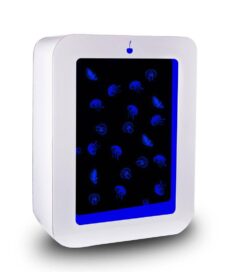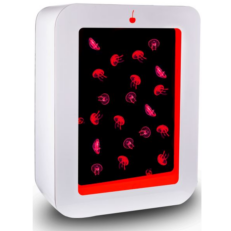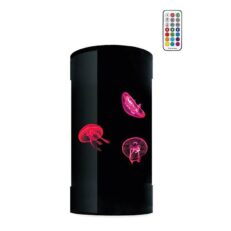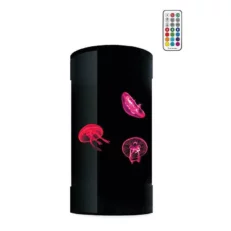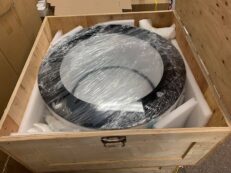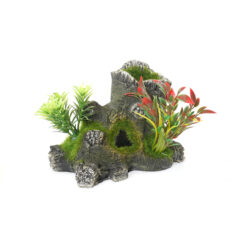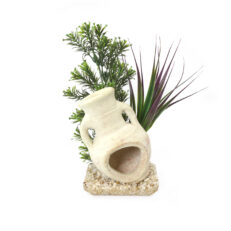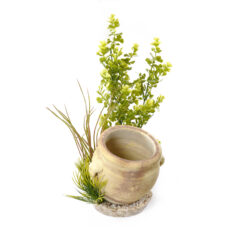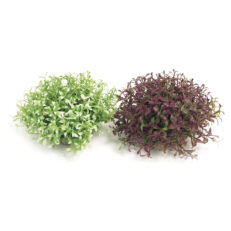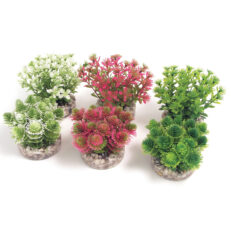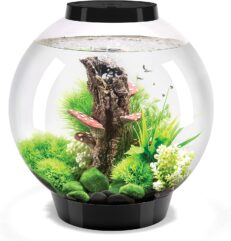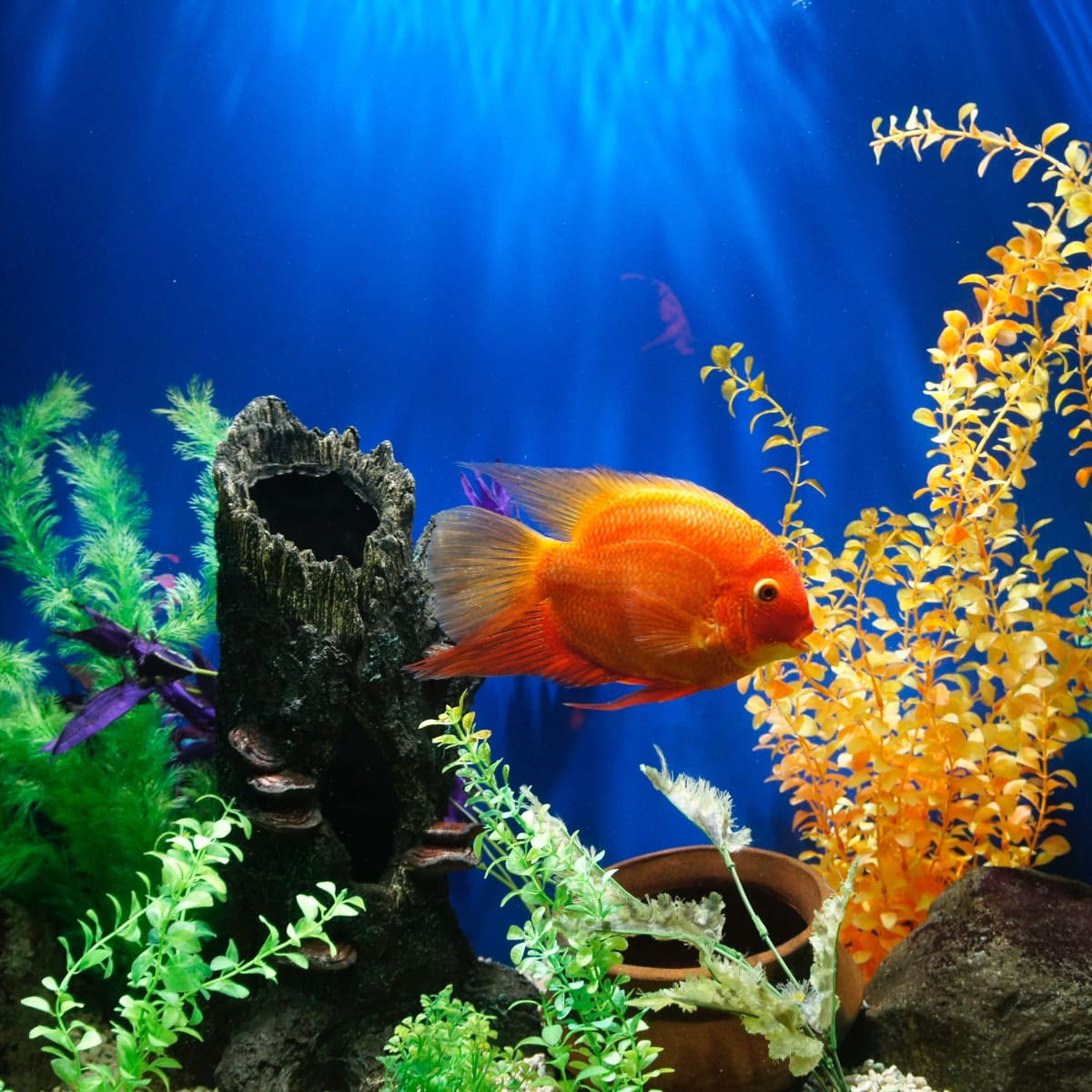
Keeping an aquarium is a rewarding hobby that offers a multitude of joys and benefits. From enhancing the aesthetic appeal of a living space to providing educational and stress-relieving advantages, aquariums can significantly enrich one’s life. In this overview, we delve into the various aspects that make aquarium keeping a fulfilling endeavor.
The visual appeal of an aquarium is undeniable. The vibrant colors of the fish, the gentle sway of aquatic plants, and the soothing sound of water contribute to creating a tranquil and beautiful environment in any living space. This dynamic ecosystem becomes a living piece of art, bringing a piece of nature into your home.
Beyond their aesthetic appeal, aquariums are renowned for their stress-reducing benefits. Watching fish glide gracefully through the water has a calming effect on the mind, making aquariums a source of relaxation and tranquility. The gentle sound of water can also have a soothing impact, creating a peaceful atmosphere.
Owning an aquarium presents a unique educational opportunity. It allows enthusiasts to learn about different species of aquatic life, understand intricate ecosystems, and develop responsible pet care habits. This continuous learning experience can be both fascinating and rewarding.
Moreover, aquariums foster a deeper connection with the natural world. They serve as a window to underwater life, offering insights into aquatic habitats and the importance of environmental conservation. This connection can inspire a greater appreciation and understanding of the natural world and its diverse ecosystems.
Aquarium keeping is a commitment that involves regular maintenance and care. Essential tasks include feeding the fish, cleaning the tank, and ensuring optimal water quality. These routines are crucial for the health and well-being of the aquatic life within.
The financial aspect is also an important consideration. The initial setup of an aquarium can be an investment, and there are ongoing costs for items like food, filters, and healthcare. Additionally, there’s a learning curve involved in understanding the needs of different fish species and maintaining the balance of the fish tank’s ecosystem.
Engaging with aquarist communities can be immensely beneficial for support and advice. These communities offer a wealth of knowledge and experience, making them valuable resources for both novice and experienced aquarists.
For beginners, starting with low-maintenance fish is advisable. These species are often hardier and have simpler care requirements, making them ideal for those new to the hobby. Starting with such fish allows beginners to gradually build their confidence and understanding of fish care.
Examples of beginner-friendly fish include guppies, bettas, and tetras. These species are known for their ease of care and can provide a solid foundation for new aquarists. As one gains more experience, they can gradually explore more demanding species and expand their aquarium.
In conclusion, starting and maintaining an aquarium is an enriching experience that blends responsibility, education, and enjoyment. It offers a unique opportunity to create a beautiful, tranquil space, learn about aquatic life, and develop new skills. For those considering this rewarding hobby, starting small and gradually expanding your knowledge and aquarium is a sensible and enjoyable approach. The world of aquarium keeping awaits, offering a fulfilling blend of beauty, learning, and serenity.
Choosing Low-Maintenance Fish for Beginner Aquarists: Key Criteria
For those new to fishkeeping, selecting low-maintenance fish is crucial for a smooth start to their aquarium journey. Understanding what makes a fish ‘low-maintenance’ can help beginners make informed choices that align with their capabilities and resources. This guide outlines the essential criteria for defining a fish as low-maintenance.
A key characteristic of low-maintenance fish is their hardiness. These fish are typically more resilient to variations in water conditions, such as temperature and pH levels, and are less susceptible to diseases. This resilience makes them ideal for beginners who are still learning the nuances of maintaining optimal aquarium conditions.
Low-maintenance fish usually have uncomplicated dietary requirements. They are not fussy eaters and can thrive on a basic diet available at pet stores. This simplicity in feeding reduces the chances of dietary complications and makes daily care routines more manageable.
These fish often do well in smaller aquariums and do not require large or complex environments. This aspect makes them a practical choice for beginners who might not have the space or resources for larger setups.
Behavioral traits play a significant role in defining a fish as low-maintenance. Fish that are peaceful and compatible with other species are easier to care for. They reduce the risk of aggression in the tank, making it simpler to maintain a harmonious aquatic community.
Choosing the right tank size is essential to provide a healthy environment for the fish. A suitable tank size ensures adequate space for fish to swim and grow. Maintaining stable water conditions is also critical, including consistent temperature, pH levels, and cleanliness. A basic aquarium setup should include efficient filtration, appropriate lighting, and, if desired, aquatic plants.
Regular maintenance, such as water changes and tank cleaning, is necessary even with low-maintenance fish. This care ensures the longevity and health of both the fish and the aquarium.
Overstocking the tank can lead to overcrowded conditions, which are detrimental to fish health. Overfeeding is another common mistake; it can pollute the water and cause health problems for the fish. Regular water testing and changes are essential to maintain a clean and safe environment. Additionally, beginners should avoid impulse purchases of fish or equipment without thorough research or understanding of the fish’s needs.
In conclusion, starting with low-maintenance fish and understanding the basics of a suitable aquarium environment are crucial steps for beginners in fishkeeping. These foundational elements pave the way for a rewarding and sustainable hobby. Beginners are encouraged to start small, learn the essentials of fish care, and gradually build their skills and knowledge in the captivating world of aquariums.
Top 10 Low-Maintenance Fish Ideal for Beginner Aquarists
Embarking on the journey of fishkeeping can be exciting, and starting with low-maintenance fish is an ideal way for beginners to get acclimated to the hobby. Here’s a detailed overview of the top 10 beginner-friendly fish, known for their ease of care and hardiness.
Guppies: Guppies are known for their vibrant colors and active nature. They are hardy fish that can thrive in a variety of water conditions and are compatible with other small, peaceful fish. Their diet is basic, and they add a lively presence to any aquarium.
Bettas: Famous for their bright colors and elegant fins, Bettas are easy to care for. They require warm water and can live in smaller tanks. It’s best to keep Bettas alone, as they can be territorial.
Neon Tetras: These brightly colored, peaceful fish are a favorite among beginners. Neon Tetras prefer slightly acidic water and should be kept in groups, as they are schooling fish.
Zebra Danios: Known for their energy and resilience, Zebra Danios are adaptable to various water conditions. They are active swimmers and do well in community tanks.
Platies: Platies come in a wide variety of colors and have a peaceful temperament. They have simple dietary needs and get along well with other non-aggressive fish.
Cherry Barbs: Cherry Barbs are hardy with a vibrant color. They prefer tanks with live plants and are peaceful, though they can be a bit shy.
Corydoras Catfish: As peaceful bottom-dwellers, Corydoras Catfish do well in groups and need clean, well-oxygenated water. They are a great addition to community tanks.
Swordtails: Swordtails are hardy and active, thriving on an omnivorous diet. They prefer slightly alkaline water and are sociable fish.
Mollies: Adaptable and sociable, Mollies need a bit more space to swim. They have a versatile diet and can be housed well in community tanks.
Goldfish: A classic choice, Goldfish are hardy but require larger tanks than often assumed. They are cold-water fish and need regular water changes to maintain their health.
Each of these fish types has its specific dietary needs and ideal tank conditions:
- Diet: It’s important to provide a diet that caters to the specific nutritional requirements of each fish species.
- Tank Conditions: The ideal tank conditions vary, including water temperature, pH levels, and tank size, tailored to suit each fish type.
- Compatibility: Some fish can be safely housed together, while others are best kept alone or in specific group sizes. Understanding compatibility is crucial to prevent conflicts in the tank.
- Additional Tips: Unique care tips, such as special feeding instructions or habitat setup, can significantly enhance the health and well-being of each fish.
Starting with low-maintenance fish allows beginners to enjoy the process of learning and growing in the aquarist hobby without feeling overwhelmed. Understanding the specific needs and characteristics of each fish type is crucial in creating a thriving aquatic environment. As beginners gain more experience and confidence, they can explore more diverse and challenging aspects of fishkeeping, continuously expanding their knowledge and skills. This journey not only brings joy and relaxation but also fosters a deeper appreciation for aquatic life.
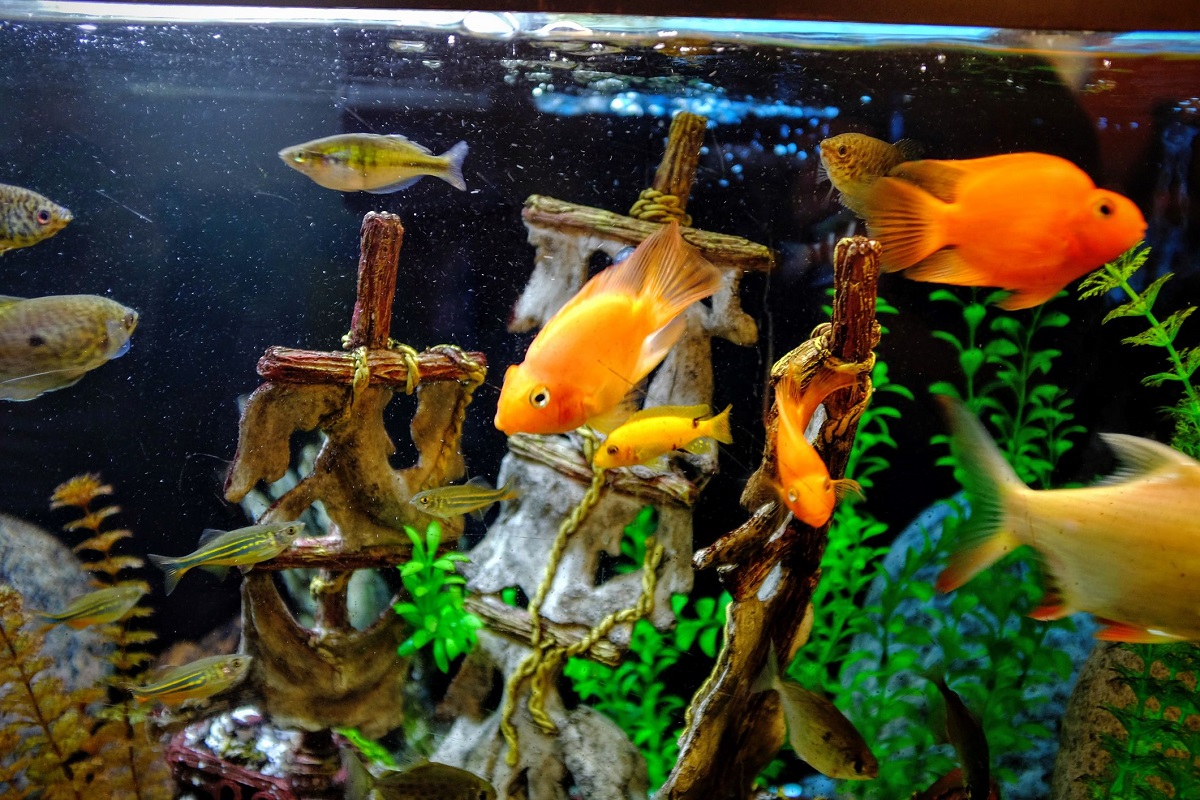
Embarking on the Exciting Journey of Setting Up Your First Aquarium
Setting up your first aquarium is an exhilarating experience, filled with both excitement and satisfaction. It’s a journey that allows you to create a thriving aquatic environment right in your own home. However, it’s important to recognize that proper setup and planning are crucial to ensure the health and happiness of your aquatic inhabitants. Let’s dive into the essentials of choosing the right aquarium, equipment, and creating a healthy environment for your fish.
When deciding on an aquarium size, consider factors like the available space, your budget, and the types of fish you wish to keep. Larger tanks can provide a more stable environment for your fish but require more space and maintenance. Essential equipment for a successful setup includes a quality filter system, a heater for tropical fish, appropriate lighting, and a sturdy aquarium stand.
Adding accessories such as thermometers, gravel, and decorations not only enhances the aesthetic appeal of your aquarium but also provides a more natural and comfortable environment for your fish.
A good filtration system is vital for maintaining water cleanliness and quality. It helps remove waste, excess food, and harmful chemicals, keeping the water safe for your aquatic pets. The lighting in your aquarium plays a significant role, especially if you have live plants, as it supports plant growth and helps regulate the day-night cycle for your fish.
Temperature control is essential, particularly for tropical fish species. Using a reliable heater ensures that the water temperature stays consistent, which is crucial for the health and well-being of your fish. Additionally, maintaining proper pH levels and other water quality parameters is fundamental to a balanced aquarium.
Understanding and implementing the nitrogen cycle is critical in establishing a healthy aquarium ecosystem. The cycling process involves establishing beneficial bacteria in your tank that will convert harmful ammonia into less toxic substances. This process can take several weeks and requires patience and careful monitoring of water parameters like ammonia, nitrite, and nitrate levels.
In summary, setting up your first aquarium is a journey that requires patience, careful planning, and a willingness to learn. Each step, from selecting the right tank to cycling your aquarium, plays a vital role in creating a healthy and beautiful aquatic habitat. Remember, the key to success lies in not rushing the process and enjoying each moment of creating your own underwater world. This venture into fishkeeping is not just about caring for fish; it’s about fostering an appreciation for aquatic life and the joys of nature.
The Cornerstone of a Thriving Aquarium – Routine Maintenance
A healthy and vibrant aquarium is a source of immense joy and tranquility, and the key to achieving this is through consistent and routine maintenance. Such care is crucial not only for the well-being of the fish but also for maintaining the aesthetic appeal of the aquarium. Routine maintenance ensures that the aquatic environment remains balanced, clean, and conducive to the health of its inhabitants.
Essential Maintenance Tasks for a Flourishing Aquarium
Regular Water Changes: Regular partial water changes are fundamental in any aquarium maintenance routine. They help remove waste products, replenish essential minerals, and keep the water quality high. Typically, a percentage of the tank water should be replaced regularly to maintain a healthy aquatic environment.
Cleaning the Tank: This involves vacuuming the substrate to remove debris and cleaning the tank walls to get rid of algae buildup. Keeping the tank clean not only makes it more visually appealing but also prevents harmful accumulations of waste and bacteria.
Filter Maintenance: The filter is the lifeline of the aquarium, keeping the water clear and free of toxins. Regular cleaning and maintenance of the filter ensure its efficient operation and contribute significantly to the overall health of the aquarium.
Equipment Checks: Regular checks of heaters, lights, and other equipment are crucial to ensure they are functioning correctly. Proper equipment maintenance helps in providing a stable environment for your aquatic life.
Balancing Water Chemistry for Optimal Health
Testing Water Parameters: Regularly testing the water for pH, ammonia, nitrite, and nitrate levels is essential. These tests help monitor the health of the aquatic environment and alert you to any issues that need addressing.
Adjusting Water Chemistry: Tips on adjusting water parameters are important, as different fish and plants have specific environmental needs. Maintaining ideal water conditions is key to the vitality of your aquarium’s inhabitants.
Understanding the Nitrogen Cycle: A thorough understanding of the nitrogen cycle is crucial in maintaining a healthy aquarium. This cycle involves the conversion of harmful waste products into less toxic substances, making it essential for a balanced ecosystem.
Conducting Regular Health Checks on Fish
Observing Fish Behavior: Regular observation of your fish for any changes in behavior or appearance is vital for early detection of health issues. Changes in swimming patterns, eating habits, or appearance can indicate potential problems.
Identifying Common Diseases: Familiarizing yourself with common fish diseases and their symptoms can help in early intervention. Knowledge of these diseases is key to preventing outbreaks in your aquarium.
Quarantine Protocols: Implementing a quarantine tank for new fish or those showing signs of illness can prevent the spread of diseases in your main tank.
Veterinary Care: In cases of serious health issues, consulting with a veterinarian specializing in fish can be invaluable.
In conclusion, establishing a regular maintenance routine is the cornerstone of a thriving aquarium. This routine not only ensures the health and well-being of your aquatic life but also enhances the overall enjoyment of your aquarium. By committing to these essential care practices, aquarium owners can enjoy the manifold benefits of a well-maintained and beautiful aquatic habitat.
Nurturing Your Aquarium with Proper Feeding Techniques
The key to a flourishing aquarium lies in the art of proper feeding. Understanding and catering to the diverse dietary needs of various fish species is not just crucial for their health but also for maintaining the overall vibrancy and balance of the aquatic environment. Each species of fish comes with its unique set of nutritional requirements, and meeting these needs effectively ensures their vitality and longevity. This comprehensive guide aims to explore the nuances of feeding low-maintenance fish, understanding the dietary spectrum across different fish species, and establishing an effective feeding schedule while consciously avoiding overfeeding.
Feeding low-maintenance fish involves more than just the occasional sprinkle of food. These fish typically thrive with a feeding schedule of once or twice a day, which aligns with their natural dietary habits and keeps them in optimal health. The amount of food given in each session is crucial; ideally, it should be an amount they can consume within a few minutes. This approach helps prevent the common problem of overfeeding, which can lead to water quality issues and health problems in fish.
The type of food plays a pivotal role as well. Most low-maintenance fish do well with a diet of flakes and pellets, which are specifically formulated to provide a comprehensive range of nutrients. To add variety and enrich the diet, occasional treats of freeze-dried or live food can be introduced. These not only provide nutritional benefits but also encourage natural foraging and feeding behaviors.
The dietary requirements of fish can be broadly categorized into herbivores, carnivores, and omnivores, each requiring a specific type of diet. Herbivores need plant-based foods, carnivores require a protein-rich diet, and omnivores benefit from a mix of both. Additionally, some fish species have unique dietary needs that must be carefully met. For instance, certain tropical fish may require more specialized diets compared to common freshwater species.
A balanced diet is key to maintaining the health and vitality of aquarium fish. It supports their immune system, promotes healthy growth, and enhances their coloration. Ensuring a variety of nutrients through a well-rounded diet is therefore essential in fish care.
Establishing a consistent feeding schedule helps maintain a stable environment in the aquarium and allows fish to develop a regular feeding rhythm. However, overfeeding is a frequent challenge in aquarium care. It can lead to excess waste, poor water conditions, and health issues like obesity and organ damage in fish. Monitoring the amount of food consumed and observing the fish’s behavior during feeding can provide valuable insights into their health and dietary needs.
As fish grow and their activity levels change, their dietary needs may also evolve. Therefore, it’s important to adjust feeding amounts and frequencies accordingly. Regular observation and assessment of fish behavior during feeding are crucial in gauging whether they are getting adequate nutrition and are thriving in their environment.
In conclusion, proper feeding is a fundamental aspect of aquarium care. It requires an understanding of the specific dietary needs of your fish, adherence to best feeding practices, and a vigilant approach to avoid overfeeding. By focusing on these aspects, aquarium owners can ensure their aquatic pets not only survive but thrive. It’s a journey that combines responsibility with the joy of watching a vibrant underwater world flourish. As such, aquarists are encouraged to embrace the process of learning and adapting, continuously refining their approach to fish care for a rewarding and successful aquarium experience.
Embracing the Excitement of Expanding Your Aquarium
Adding new fish to your aquarium is an exciting venture that can enhance both the beauty and dynamism of your aquatic environment. It brings not only aesthetic pleasure but also the joy of creating a more diverse underwater community. However, expanding an aquarium requires careful planning and a deep understanding of the needs and compatibilities of different fish species. Ensuring a harmonious addition to your tank is crucial for the health and well-being of both new and existing fish.
Guidelines for Successfully Introducing New Fish
Quarantine New Arrivals: Quarantining new fish before introducing them to your main tank is a crucial step. This practice helps prevent the spread of diseases and parasites to your established community. A separate quarantine tank allows new fish to be monitored for any signs of illness or stress in a controlled environment.
Acclimatization Process: Gradually acclimatizing new fish to your tank’s specific water conditions is essential in reducing stress and shock. This process involves slowly introducing them to the tank water’s temperature, pH, and chemical composition, often through methods like the drip line technique.
Observing Behavior: Once introduced, it’s important to monitor the behavior of both the new and existing fish. This observation helps ensure compatibility and can prevent potential aggression or territorial disputes.
Researching fish compatibility is key to creating a harmonious tank. Compatibility involves considering various factors such as temperament, size, and environmental needs. Some species are social and thrive in groups, while others are more solitary or territorial.
Creating balanced groups that cater to the social dynamics of different species can significantly enhance the overall harmony of the tank. Additionally, it’s important to choose fish that require similar water conditions and have compatible environmental preferences to ensure a healthy living space for all your aquatic pets.
As you gain experience in fishkeeping, you might consider introducing more sensitive or demanding species. Start with hardier species and gradually move to those that require more specialized care. Continuous learning about the specific needs of different species is vital.
Upgrading your tank setup might become necessary to accommodate more demanding fish. This upgrade could include larger tanks, advanced filtration systems, and specialized equipment. Close monitoring of water quality and fish health is crucial, especially as more complex species are introduced.
In conclusion, responsibly expanding your aquarium is a rewarding process that requires patience, thorough research, and attention to detail. It’s an ongoing journey of learning and adaptation, offering immense satisfaction as you watch your aquatic community grow and thrive. Remember, the well-being of your aquatic life should always be the priority, and with the right approach, you can enjoy the enriching experience of cultivating a diverse and vibrant aquarium.
Conclusion
Embarking on the journey of starting an aquarium is an enriching experience, full of learning and discovery. For beginners, the emphasis on low-maintenance fish is a wise and beneficial approach. It allows new aquarists to delve into the world of fishkeeping without feeling overwhelmed, providing a manageable and enjoyable entry point into this fascinating hobby.
Starting with low-maintenance fish offers several key benefits for novice aquarists. These fish typically require less intricate care, allowing beginners to focus on mastering the basics of aquarium maintenance and care. This ease of care is not only practical but also helps in building confidence. Successfully caring for these hardy species can boost a beginner’s confidence, setting a positive tone for their fishkeeping journey.
Moreover, starting with simpler species lays a solid foundation of knowledge and skills in fishkeeping. It provides essential learning experiences in understanding fish behavior, tank maintenance, and water chemistry, all of which are fundamental aspects of keeping an aquarium.
Fishkeeping is a journey of lifelong learning. There’s always more to discover about fish care, aquarium maintenance, and the art of aquascaping. Continuous education is key to growing as an aquarist and ensuring the well-being of your aquatic pets.
Engaging with the aquarist community, whether through local clubs or online forums, can be immensely beneficial. These communities offer a wealth of knowledge and experience, providing both support and inspiration. They are valuable resources for advice, problem-solving, and sharing experiences.
Inviting readers to share their own aquarium journey can foster a sense of community and shared learning, allowing everyone to benefit from collective experiences and knowledge.
For beginners, accessing reliable resources is crucial. Providing a list of recommended books, websites, and forums can guide them in gathering accurate and helpful information. A starter checklist that includes essential equipment, water testing kits, and the right fish food can also be invaluable.
Patience is a key virtue in fishkeeping. Ecosystems take time to establish and stabilize, and understanding this is crucial for maintaining a healthy aquarium. Beginners are encouraged to seek advice from experienced aquarists or professionals, especially when faced with challenges or when making decisions about expanding their aquarium.
In summary, starting an aquarium is a journey filled with joy, learning, and the satisfaction of nurturing an underwater world. Beginners are encouraged to start with low-maintenance fish, gradually build their knowledge, and immerse themselves in the continuous learning and community involvement that fishkeeping offers. With patience, research, and a willingness to learn, anyone can create and maintain a thriving aquatic environment, enjoying the many rewards that this hobby brings.

